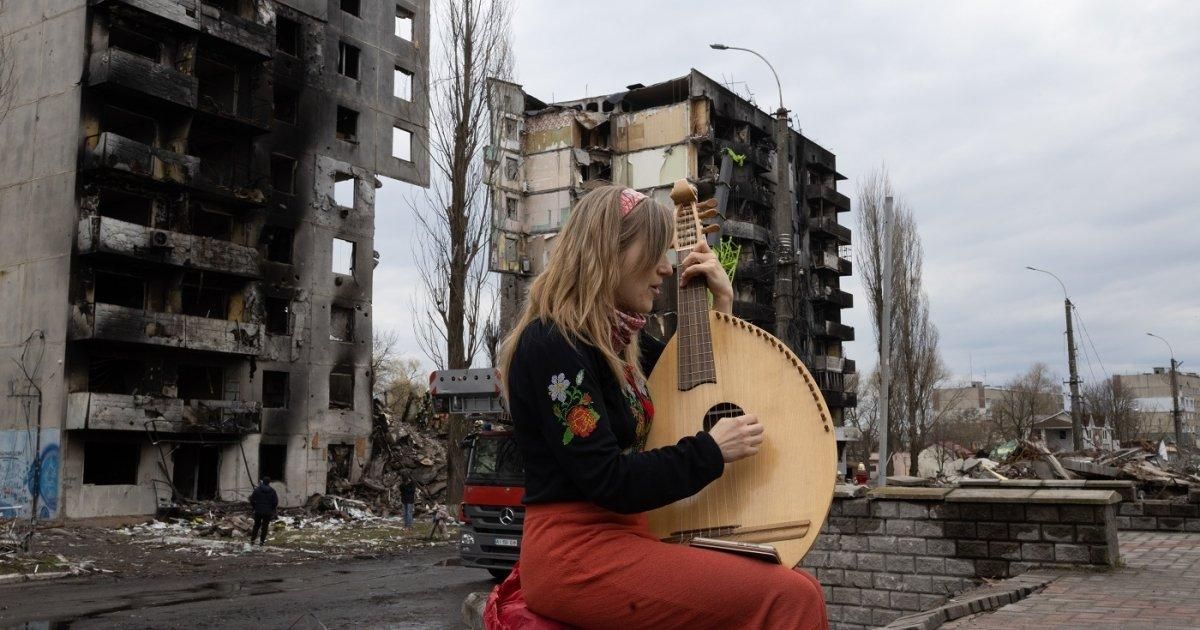Art has long served as both inspiration and resistance, especially during times of war. The current conflict between Ukraine and Russia has brought many artists to the forefront, becoming voices of resilience and identity amid chaos.
David Gutnik, a Ukrainian-American filmmaker, took it upon himself to document this inspiring yet troubling phenomenon. His film, Rule of Two Walls, delves deep, exploring how artists persist and push back against the ramifications of Russian aggression.
When Russia invaded Ukraine back in February 2022, many analysts predicted Kyiv would fall within days. Instead, almost three years later, Ukraine has not only survived; it has thrived, primarily due to the unwavering spirit of its artists.
“What is this nation? What is this people? What is this identity?” These are the rhetorical questions Gutnik wrestles with, illustrating the complexity of Ukraine’s cultural identity as it faces external aggression.
Unlike typical war documentaries focusing on military action, Gutnik's film shines the spotlight on those who remain rooted to their homeland. It showcases painters, musicians, and other creatives who bravely continue their work even as gunfire echoes ominously nearby.
Their art stands as both testimony and protest, aiding in the reclamation of Ukrainian identity. Gutnik notes this reveals Putin's efforts to diminish Ukrainian identity are being challenged head-on through artistic expression.
“This is not just about missiles and drones; it’s about identity and history,” he emphasizes. The conflict transforms the conventional idea of warfare, drawing attention to the struggle over cultural legacy and memory.
Among the featured artists is Bogdana Davydiuk, who embodies the chaotic spirit of war through her Dada-inspired murals. Then there’s Stepan Burban, known as Palindrom, whose music serves as both rallying cry and catharsis against Russian aggression.
Anchoring the film's poignant narrative is Kinder Album, whose anonymous works feature surreal drawings depicting the inherent vulnerability of life during wartime. The title Rule of Two Walls metaphorically refers to moments of peril when shelter seems fleeting during bombardments.
Interestingly, Gutnik’s perspective as both filmmaker and artist shapes the narrative. Alongside his team, he employs innovative storytelling techniques, blending haunting voices to convey the emotional weight of displacement experienced by many.
The film aims to present this haunting reality without glossing it over. There are powerful scenes showcasing the aftermath of violence, which some viewers have found jarring—especially those unaccustomed to the high stakes of war.
Gutnik defends this creative choice fiercely, believing it’s important not to shy away from the horrors faced daily by the people he depicts. Ignoring these realities would mean betraying their experience.
“If you don’t have to see it, you can tune it out,” he indicates, comparing how Americans often disengage from the horror of war, unlike those living the experience day by day.
The documentary resonates with broader historical narratives. Gutnik draws parallels with past atrocities—how cultures are sometimes erased or altered by oppressive regimes, emphasizing how destruction of culture often follows physical devastation.
He relays how, just days before Russia’s full-scale invasion, Putin claimed Ukraine didn’t exist, setting the stage for justifying the invasion. Such rhetoric reveals the battleground for democracy and identity often lies within culture itself.
Throughout the film, the perspective shifts to include Gutnik’s personal background. Having roots deep within Ukraine, his desire to re-connect with his heritage influenced his shift from initial plans of focusing only on refugees to capturing the broader artistic narrative rising from the conflict.
Inspired by Lyana Mytsko, director of the Lviv Municipal Art Center, Gutnik discovered the dual role of artifacts—shelter against war and vessels of cultural expression. Her assertion, “Each one is a gun of Ukrainian culture,” reshaped his vision.
Mytsko's act of unearthing buried murals speaks volumes about reclaiming lost cultural identities, serving as the film’s thematic backbone. It’s not merely about documenting the present but also about preserving history before it’s lost forever.
Art, as depicted, serves as both shield and sword. It reflects the dilemma artists face: to create and endure or to remain silent and surrender to erasure.
Frequent bombings of theaters and museums are not mere collateral damage, but rather strikes aimed to erase historical narratives. Such tactics are reminiscent of genocides throughout history, targeting cultural essences as much as human lives.
For Gutnik, acknowledging these attacks is pivotal for grasping the war's true nature. He recalls Timothy Snyder’s statements about how perpetrators of genocidal actions deny the existence of their victims, erasing their narratives and making justification easier.
“When someone wants to commit genocide, they claim these people don’t exist,” he articulates, reflecting on how cultural heritage becomes the first casualty of conflict.
Ominously, the documentary includes graphic imagery of physical destruction alongside artistic responses. These representations spark discomfort among some viewers, especially those distanced from the realities they depict.
Gutnik’s commitment to authenticity drives the film, compelling audiences to confront the harsh truths about warfare and survival. “If you don’t name it or show it, you don’t have to deal with it,” he argues passionately.
The powerful directorial choices serve not just to inform but also to engage viewers on emotional and intellectual levels. There’s call for awareness, urging people to recognize the realities of displacement and conflict.
With almost three years of conflict leading to new artistic movements and identities, Gutnik’s film captures a unique historical moment. The unyielding spirit of Ukrainian artists becomes emblematic of the broader struggle for self-definition.
Rule of Two Walls embraces not just resilience but also beauty—the emergence of artistry amid chaos. It’s about re-claiming identity, fighting back against erasure, and insisting on existence.
Although these stories emerge from the heart of war, they resonate beyond divisions, offering hope, insight, and resistance. Ukrainian artists, through their works, transform trauma and create paths to dignity, pushing back against oppressive narratives.




